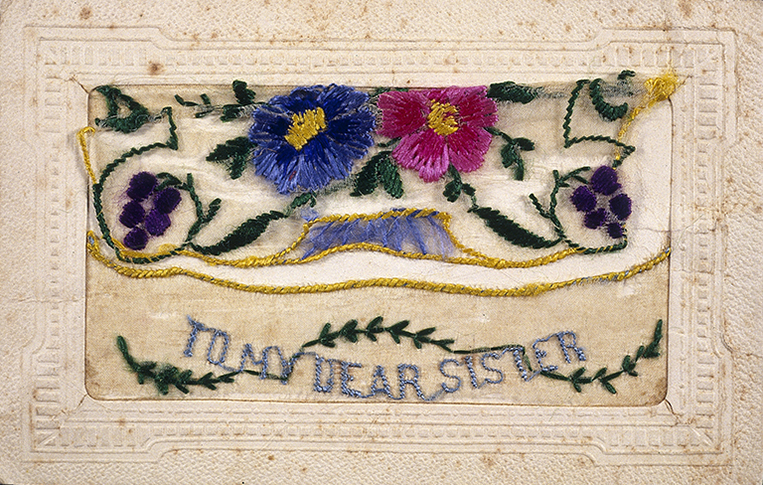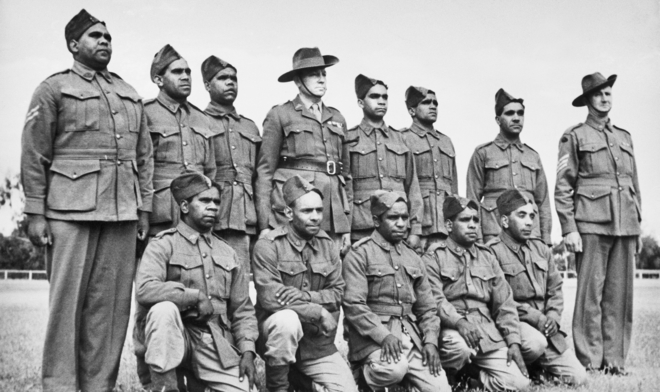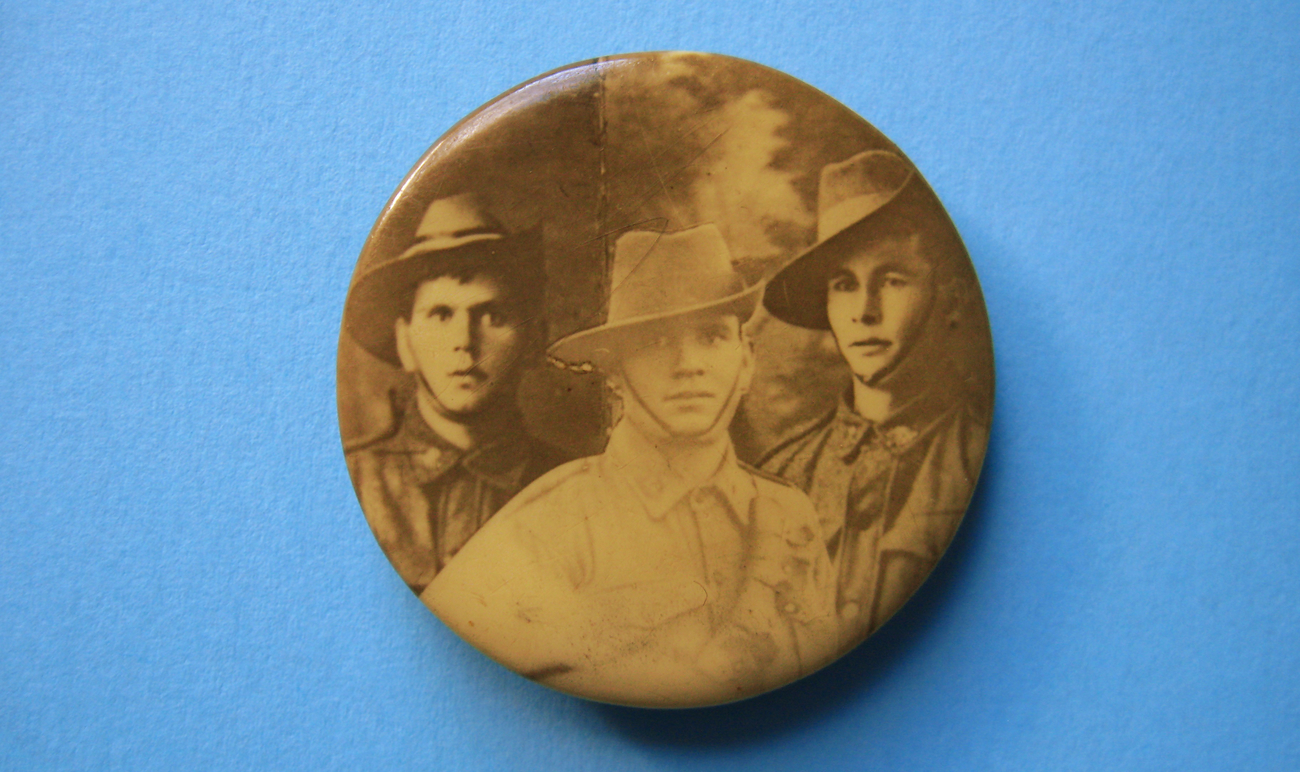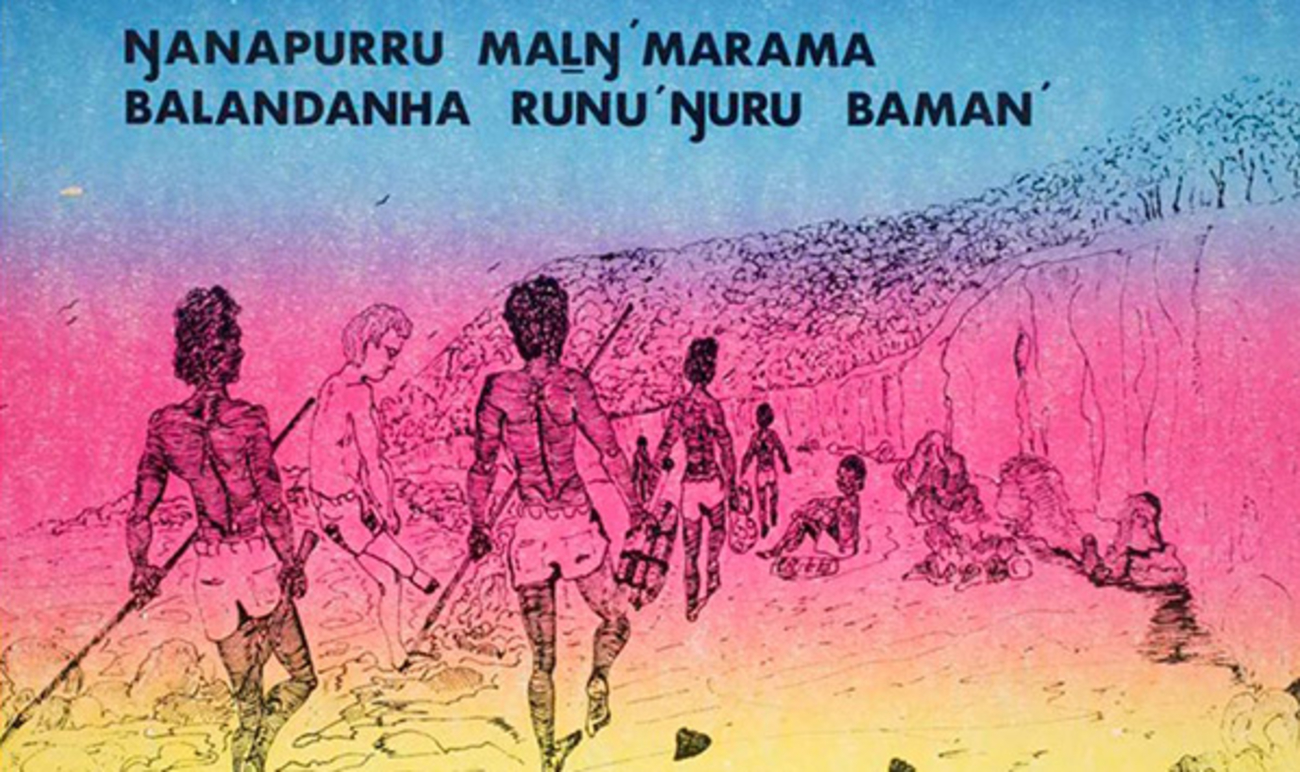AIATSIS pays our respects to Aboriginal people and Torres Strait Islanders who served and died in all wars.
Each year on the 11th November Australians observe one minute’s silence at 11am, in memory of those who died or suffered in all wars and armed conflicts.
Lest we forget

Sally Russell (nee Cooper) is holding a post card her brother Dan designed and sent to her from France in 1917 a short while before he was killed in action, Footscray, 1990, Jackomos Collection, JACKOMOS.A12.BW-N05340_21
Sally Russell (nee Cooper) is holding a post card her brother Dan designed and sent to her from France in 1917 a short while before he was killed in action, Footscray, 1990, Jackomos Collection, JACKOMOS.A12.BW-N05340_21
Yorta Yorta man, Daniel ‘Dan’ Cooper sent the beautifully embroidered card to his sister Sally Russell (nee Cooper) in 1917. Sally holds this same postcard and a portrait of her brother in the second photograph taken in 1990. The cards, known as ‘sweetheart cards’, were hand embroidered by French women and sent to factories for mounting on postcards. An estimated 10 million hand-made cards were produced from 1915-1919.
Dan Cooper was a 21 year old Private in the 24th Australian Infantry Battalion when he sent this card to his sister. Not long after sending the card, Daniel participated in the Third Battle of Ypres (also known as the Passchendaele Offensive). Dan was killed in action at the Battle of Menin Road Ridge on the 20th of September 1917.
Dan Cooper and Sally Russell were the children of William Cooper, campaigner for Aboriginal people’s rights, organiser of the Day of Mourning 1938, secretary of the Australian Aborigines’ League and the first person in the world to lead a protest in 1938 against the treatment of Jewish people by Nazis.
The death of his son and the treatment of returned Aboriginal soldiers greatly influenced William Cooper in his campaigns for equal rights for Aboriginal people. In reference to his opposition to Aboriginal people joining the Australian Defence Forces, Cooper said: “ the Aboriginal now has no status, no rights, no land and, though the native is more loyal to the person of the King and the throne than is the average white he has no country and nothing to fight for.”
Mer / Murray Island branch of the Legion of Ex-Servicemen. This photo from 1958 shows ex-members of the Torres Strait 11th Light Infantry Battalion performing the “Army Dance”. The performance incorporates rifle ‘zamiyagal’ (articulated dance items) with ‘dharis’ (Torres Strait Islander headdress) hanging from them. The Torres Strait Light Infantry Battalion was one of the very few racially-based units in Australian military history and in 2018 we commemorate their 75th anniversary.
The Men of D Company, who were from Saibai and Boigu, went on ‘sit down strike’ in 1943 demanding equal pay with respect to white soldiers. They managed to get their wages raised but only to two thirds of the normal rate. Yet they still served…
Sources
Beckett J 1989, Torres Strait Islanders: Custom and Colonialism
Museums Victoria 2018, Memento – Sweetheart Cards WWI
Rootschat 2018, Private Daniel Cooper
Wikipedia 2018, Battle of the Menin Road Ridge
Comments
Anonymous replied on Tue, 04/12/2018 - 15:22 PERMALINK
I was born on Remembrance Day so it has always had a special part in my (heartbroken) heart. I teach secondary school and feel that many students would not know about Aboriginal soldiers. Students know the statistics but the personal stories you have provided could assist in helping students connect on a deeper level. Differences in pay is still going on for different groups and your example shows the Australian spirit of perseverance and protection, for everyone, no matter who they are. Does anyone have any suggestions of incorporating these types of stories into a History/English class to celebrate what these soldiers did, rather than celebrate the notion of war?




